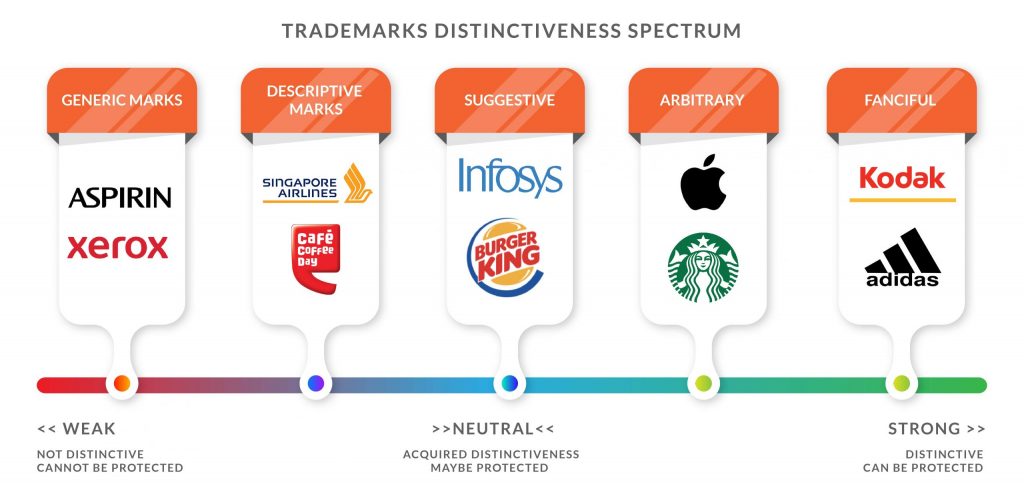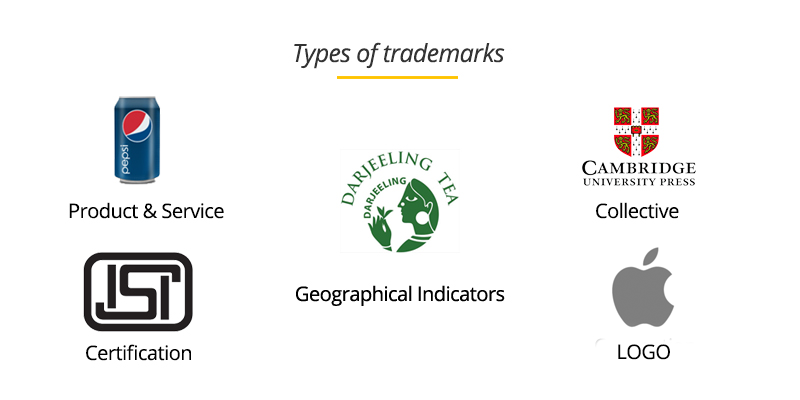Types of trademark in India
Trademarks identify products that are affiliated with a specific company and in the process identify the company as the owner of the product. Trademarks are usually ignitions, words or symbols that represent a product and distinguish it from other products of its kind. Registration of trademarks helps to protect the goodwill built under the brand or brand name.A word, phrase, symbol, and / or design that is able to identify and identify the source of a party’s goods from others is known as a trademark. By obtaining trademark registration, a person acquires exclusive access rights to his trademark and prevents others from exploiting it. Also, registration and regulation can be done in India under the Trademark Act 1999. Types of Trademark in India – Trademark Registration in Coimbatore is what we are going to be discussed here and mentioned documents.
Types of trademarks
Common types of trademarks
-
Generic mark
Common marks represent the everyday description of a product or its seller. These can be common words like “shoes,” “watch,” or “food.” But because these words belong to people, a restaurant cannot, for example, register a trademark for the word “restaurant.” And rightly so, this would lead to an unfair monopoly on the entire F&B industry. Every other establishment may have the potential to go out of business. As such, the company must add a special second modifier to its products to qualify for general marks.
-
Suggestive mark
The points discussed above are just broad strokes. More specific and therefore more defensive, trademarks require a proportionate level of ingenuity to qualify. As an issue, indicator marks register words that denote the qualities of the product without being related in any literal sense. This is the primary consideration in classifying marks as an idea indicator from the customer end. A good example would be Netflix, as it hints at its line of service without directly showing that the service is an online streaming platform.
-
Descriptive mark
While the common mark may represent a product or its provider, the descriptive mark only applies to the merchant. But since these words are considered part of the universal language, they are still non-registerable. However, adding a signifier to describe the significant quality of the product may qualify for trademark protection.
-
Arbitrary mark
An arbitrary mark draws local words or phrases. However, these terms should not be entirely related to the products they suggest. After the warning becomes an increased cost of advertising strategy. Efforts should focus on increasing the audience with new semantic associations. However, this should not be disappointing, as success should mean significant returns. Take Apple Pal, for example, a brand named Fruit. It sells electronic products that are quite ironic, not just as luxury devices, but as inedible goods. A significant portion of their success is due to the similarity of their effective marketing and careful intellectual property management.
-
Fanciful mark
This type of trademark registration is really the easiest. He just wants a new word that doesn’t mean anything to the general public at the moment. Although easy to file, a knowledgeable forecast is also required for imaginary marks. In particular, the company should carefully examine how the audience will acquire this brand. It is best to do rigorous research on whether it is easy to remember, spell or pronounce. Presumably brands want their business to gain positive attributes, so companies should also consider the cultural influence of their imaginary mark.
Typical types of trademarks
-
Service mark
This special type of trademark employs protection for non-manufactured items such as services. While usually interchangeable in the local language, the service mark distinguishes the organization’s class of services from other similar providers. Examples include American Airlines, Hilton Hotels and Maiden, to name a few.
-
Certification mark
This mark is reported to comply with local regulations. Unlike other types of trademarks, the certificate mark is used by an authorized user, not the owner. In addition, to create a second level of protection, these certification bodies are not allowed to give these marks for their own use, as determined by the “duty of neutrality”.
-
Collective mark
Collective marks are special trademarks owned by associations or associations. These markings appear to separate the organizational roots. For example, the Red Cross uses this type of marking to distinguish its members and services from other similar organizations. Furthermore, it prevents others from using their mark because they have a worldwide reputation and credibility.
-
Trade Dress
Trade dresses cover special aesthetic aspects thanks to packaging, interior or exterior design. When closely related to the product, the protection covers the form in which the product appears.
-
Trade Name
Trade names are used to identify an entire company, rather than to distinguish a particular service or product. This is especially common in multinational corporations that host various brands under their trade names. Procter & Gamble is an excellent example of a trade name with many trademarks, such as Oral-B.
-
House Mark
Like a trade name, a house mark identifies a manufacturing company or corporation. The difference, however, is that house marks are placed with specific product names to identify them as belonging to the company. To illustrate this point, we can take Toyota Corp as an example. Incorporating car dealerships such as “Toyota Corolla” and “Toyota Camry” with their different trade names makes the models more recognizable.
-
Sound mark
Commonly known as a “jingle”, a sound mark is a unique sound or melody that has proven valid for a brand. McDonald’s marked his voice for the incredibly catchy sound he played in each of his TV commercials.
Advantages of trademark in India
Exclusive rights:
The proprietor of a registered trademark has the right of choice over the trademark. The proprietor application can use the same for everything that falls under the submitted class. Moreover, the proprietor may enjoy sole responsibility for the trademark and prevent others from discrediting the use of the trademark under the same category as it is registered. It gives you the privilege of taking action against a discredited client of a trademark registered.
Builds trust and understanding:
The reputable excellence of your goods and services is known by everyone through trademarks and that builds trust and understanding among customers in the market. It helps to create loyal and permanent customers who will depend on the same brand.


Leave a Reply
You must be logged in to post a comment.